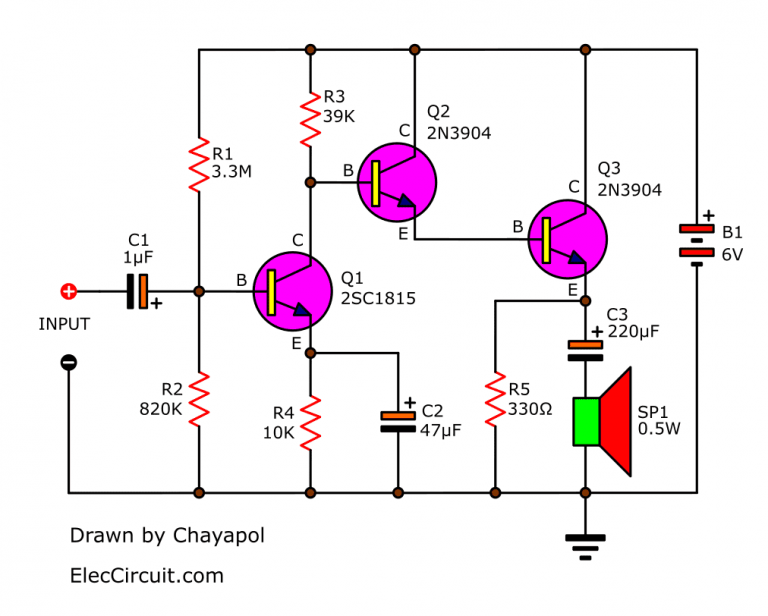

Fundamentally, the transistor voltage regulators which are controlled by Zener are classified into two types namely series voltage regulators and shunt voltage regulators. Beneath these conditions, a transistor-like Zener controlled is used frequently to maintain o/p voltage stable. Thus, the Zener RPS ( regulated power supply)efficiency turns into extremely low as the load current is high. In remote villages, there is often power outages. It is not simple to modify the o/p voltage because no such resources are provided. The Schematic Diagram of Dual 12v Output Transistor Inverter.This occurs due to both VZ & VBE reduce by the rise in room temperature. common emitter configuration The schematic is 40 watt audio amplifier pretty simple. The adjustments within Zener current are decreased to a significant amount the amount produced is not completely stable. Multiply this by millions or billions of stable state transistors.The series voltage regulator disadvantages are listed below. Therefore, the Zener impedance effect will be decreased extremely & we can get an additional stabilized output. The main benefit of this voltage regulator circuit is, the changes within Zener current are decreased through a factor ‘ß’.For instance, if Zener voltage is 8V, the transistor’s base voltage will stay approximately 8V. The transistor series voltage regulator working is when the voltage at the transistor’s base voltage is held to the stable voltage across the diode. Actually, an ohmmeter may even spot a transistor with a loss of gain, since the gain of a transistor seldom changes. transistor-series-voltage-regulator-circuit-diagram the dynamic input and output impedances of the transistor itself. This leads to an improvement in efficiency and compression in size. Here Zener diode provides the reference voltage. Basically as per the generations of the electronic circuits gets revolutionized and improved for better and comfortable living the transistors played a prominent role by replacing themselves with vacuum tubes. By using a synchronous rectifier to measure the in-phase component of the capacitor impedance. The design is unusual in that it uses 10kHz, instead of the more usual 100kHz.

When the unregulated DC supply is given to the input terminals of the circuit then we can get the regulated output across the load. Before I designed the 5 Transistor ESR meter, I designed and built an ESR meter using a digital panel meter. So this is the reason to call this regulator a transistor-series-voltage-regulator. In this circuit, the load current flows through the Q1 series transistor. An amplifier circuit which is purely based on a transistor. The input signal to an amplifier will be a current or voltage and the output will be an amplified version of the input signal. An amplifier is a circuit that is used for amplifying a signal. The following circuit can be built with a transistor as well as a Zener diode. Transistor Amplifier Schematic Circuit Diagram. This voltage regulator circuit design is shown below. Circuit Design of Transistor Series Voltage Regulator The series voltage regulator can be defined as a regulator which has the limitations like high dissipation, less efficient, and the transistor voltage and Zener diode voltages are affected once the temperature rises. What is a Transistor Series Voltage Regulator?


 0 kommentar(er)
0 kommentar(er)
